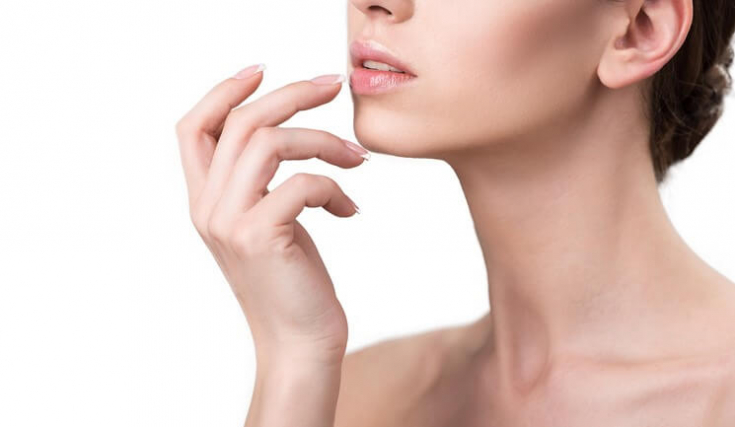The popularity of the injection correction of the lower jaw is growing rapidly. To successfully perform and obtain the desired results of the procedure, it is important to take into account the mechanism of aging in this area, clearly define the target tissues and work with extreme caution in hazardous areas.
As part of the estet-portal.com article, Dr. Tracey Bell examines age-related changes in the lower jaw and anatomical features of the zone, which may affect the final result of the correction .
- Age-related changes in the lower jaw
- Targeted soft tissues and danger zones in mandibular correctionty
Age-related changes in the lower jaw
In the process of aging, bone structures and soft tissues undergo changes. Around the age of 20, the size of the lower jaw begins to exceed the size of the upper.
As a result, the profile becomes straighter. A slight increase in the length of the jaw is also observed at the age of 25-46 years.
Follow us on Telegram!
The consequences of age-related changes in soft tissues – the nasolabial line descends, the face is elongated, fleas appear. The skin becomes flabby, ptosis of the skin, subcutaneous tissue, retaining ligaments and fat becomes pronounced. Moreover, there is a decrease in the volume of soft tissues.

Soft tissue aging is influenced by internal (genetic predisposition, hormonal background), as well as external factors, such as:
- extreme temperatures;
- food;
- dehydration;
- ultraviolet;
- toxins.
The age of the patient influences the aging of the mandible and the choice of the optimal procedures necessary to obtain the desired correction result. An important role in this matter is played by the hormonal component.
For example, age-related decrease in estrogen levels in women is accompanied by the appearance of fine wrinkles, dryness and atrophy of the skin. In the future, this list of signs of aging is supplemented by thinning of the epidermis, flabbiness of the skin, a decrease in the concentration of dermal collagen and skin hydration.
You may also be interested in: Filler injections for the correction of the chin and lower jaw in an elderly patient
In some cases hormone replacement therapy may be appropriate, along with surgery or injectable rejuvenationeat.
Targeted soft tissues and danger zones in mandibular correction
The region of the lower jaw consists of hard and soft tissues, facial muscles and overlying fascia.
The superficial subcutaneous fascia, which is the lowest level of the soft tissue integumentary system in the upper jaw and under the ears, is most commonly manipulated. The superficial subcutaneous fascia is woven into the fascia of the parotid gland.
Read also: Lipofilling of various areas of the face for optimal rejuvenation and beautification
Excess fat in the lower jaw and neck can lead to loss of definition and an increase in the cervico-mandibular angle.
Injury to the facial nerve can cause facial paralysis.
For non-surgical procedures, the most hazardous areas are:
- eyebrow;
- nasolabial fold;
- angular artery.
Non-surgical manipulations in these areas are associated with an increased risk vision loss, skin necrosis and cerebrovascular disorders.
During injection correction, due to the increased risk of vascular damage, it is also necessary to work with extreme caution in the following areas:
- eyebrow;
- whiskey;
- nose;
- perioral zone;
- infraorbital zone;
- nasolabial fold.
It is important to remember that:
- the superficial temporal artery runs from the temple down through the mandible and gives blood to the jugular vein;
- in the region of the nasolabial fold, two thirds of the facial artery is hidden under the mimic muscles; also a blood vessel crosses the midline of the mandible.
Read also: Trend-Following: Effective Correction of the Lower Third of the Face
Undoubtedly, an esthetician should be well versed in the location of arteries and veins on the face. But even experienced specialists are not immune from dangerous complications, which can be caused by individual anatomical features of patients.
Facial nerve, temporal artery and nasolabial fold area – the main danger zones in injection correction of the lower jaw.
Therefore, one should work in hazardous areas with extreme caution, having previously armed with all the tools and preparations necessary for a quick response in case of development of vascular and other dangerous complications of injection procedures.
Remember – Patient safety is paramount!
Adapted from Aesthetics.
More useful and interesting information on our channel on YouTube:







Add a comment